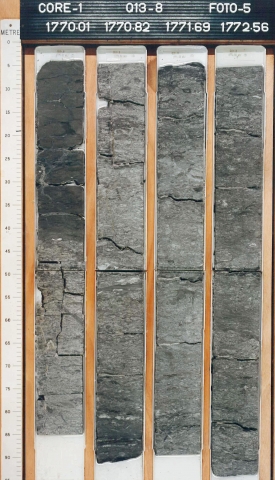Dark brownish-grey to grey claystone. Mica and very fine lignitic matter are common. Generally, the claystones are only very slightly calcareous. In offshore areas, the upper part of the formation can locally be very calcareous. In the West Netherlands Basin and Broad Fourteens Basin the formation is very silty to sandy with many intercalated siltstone and very fine sandstone beds, especially along the basin margin.
Shallow- to fairly deep-marine (middle- to outer-neritic) setting, where fines and minor carbonates settled. Thin sand layers were deposited mainly during storms and lowstand periods.
Where the Vlieland Sandstone Formation is present, the more or less conformable contact is generally quite sharp. Otherwise unconformably on a wide range of older formations.
Virtually conformable contact with the marly Holland Formation, or the clearly unconformably contact with the Chalk Group or Lower North Sea Group. The upper boundary, with the Holland Formation, is sharp. In the West Netherlands Basin the upper boundary with the De Lier Member is gradual.
